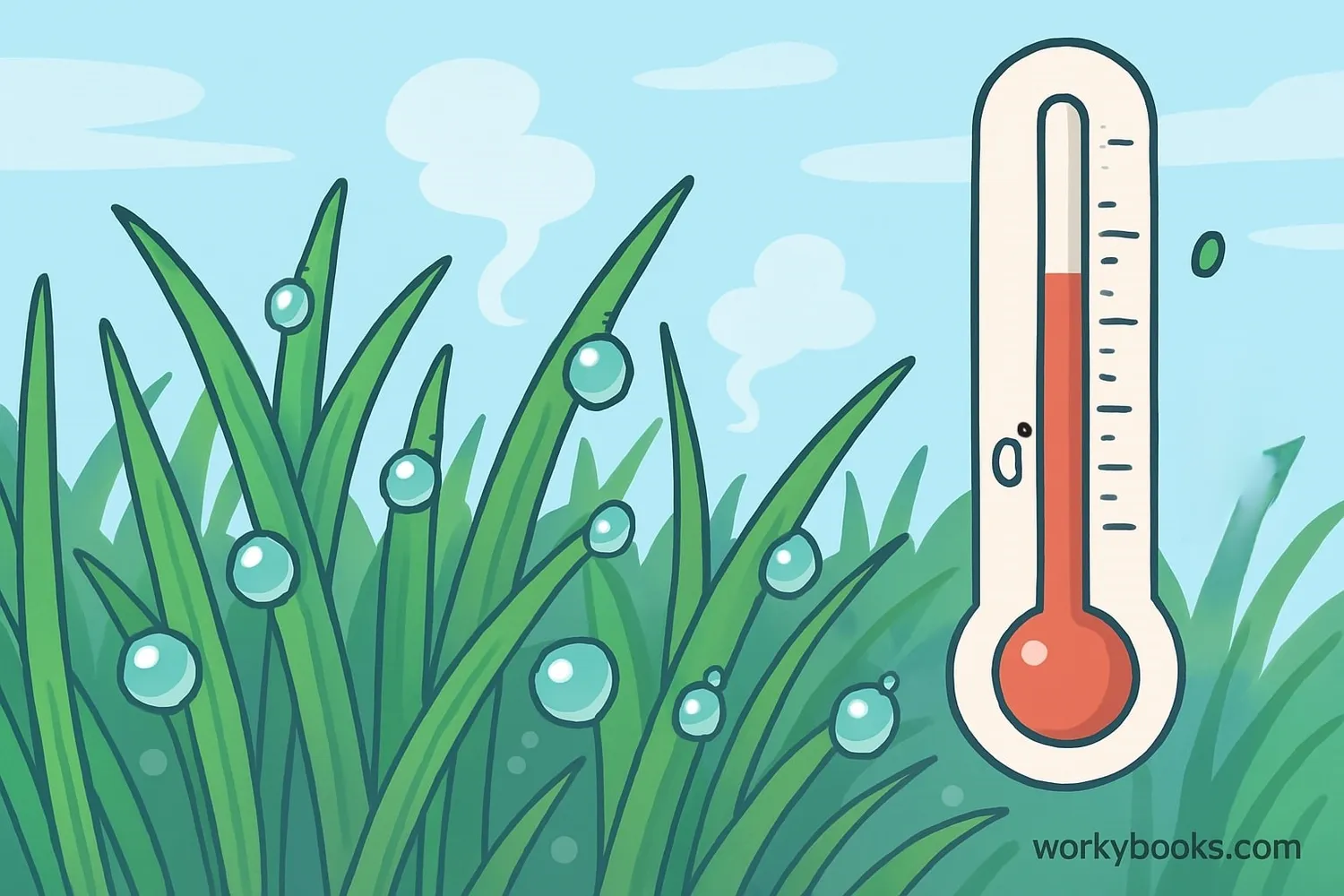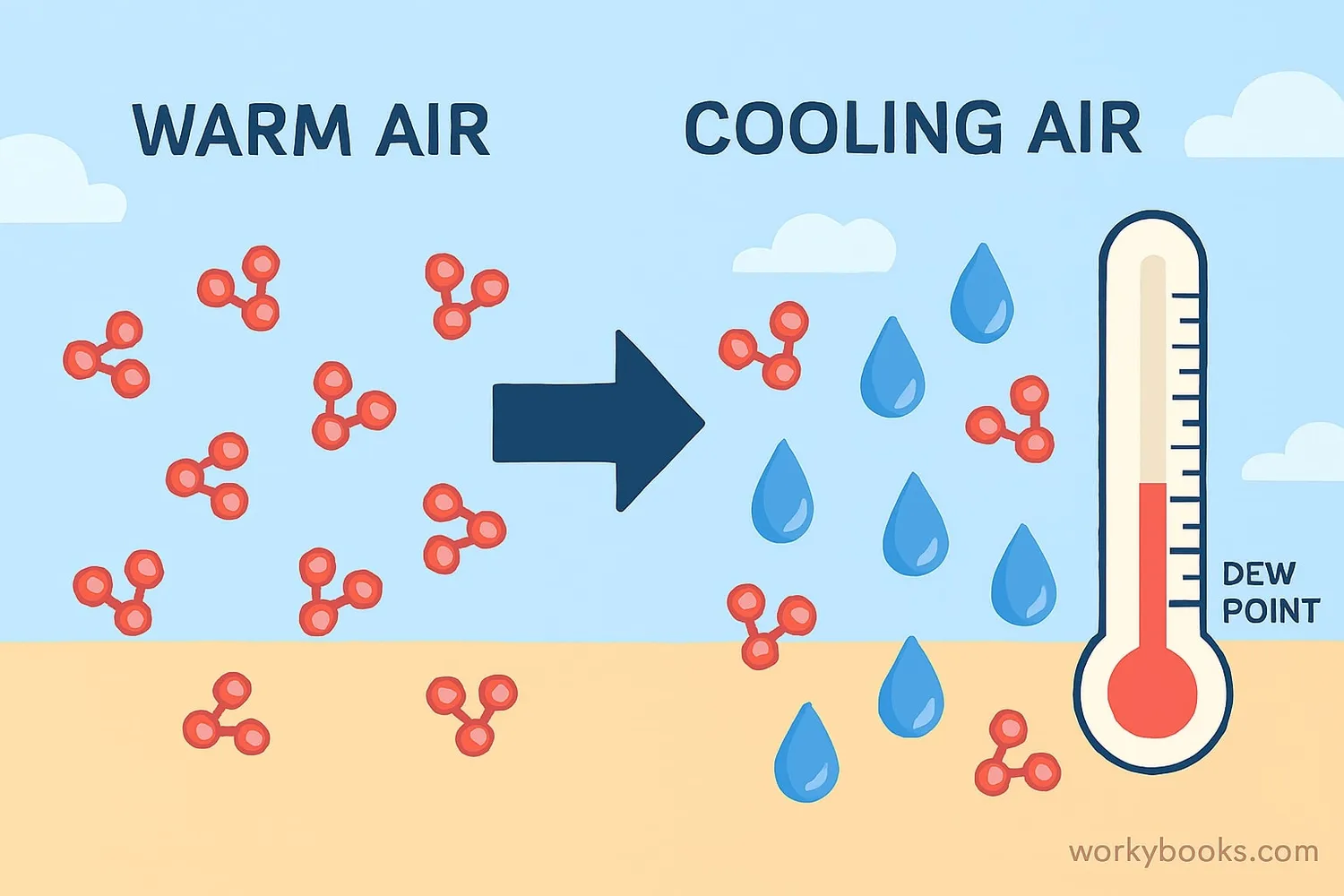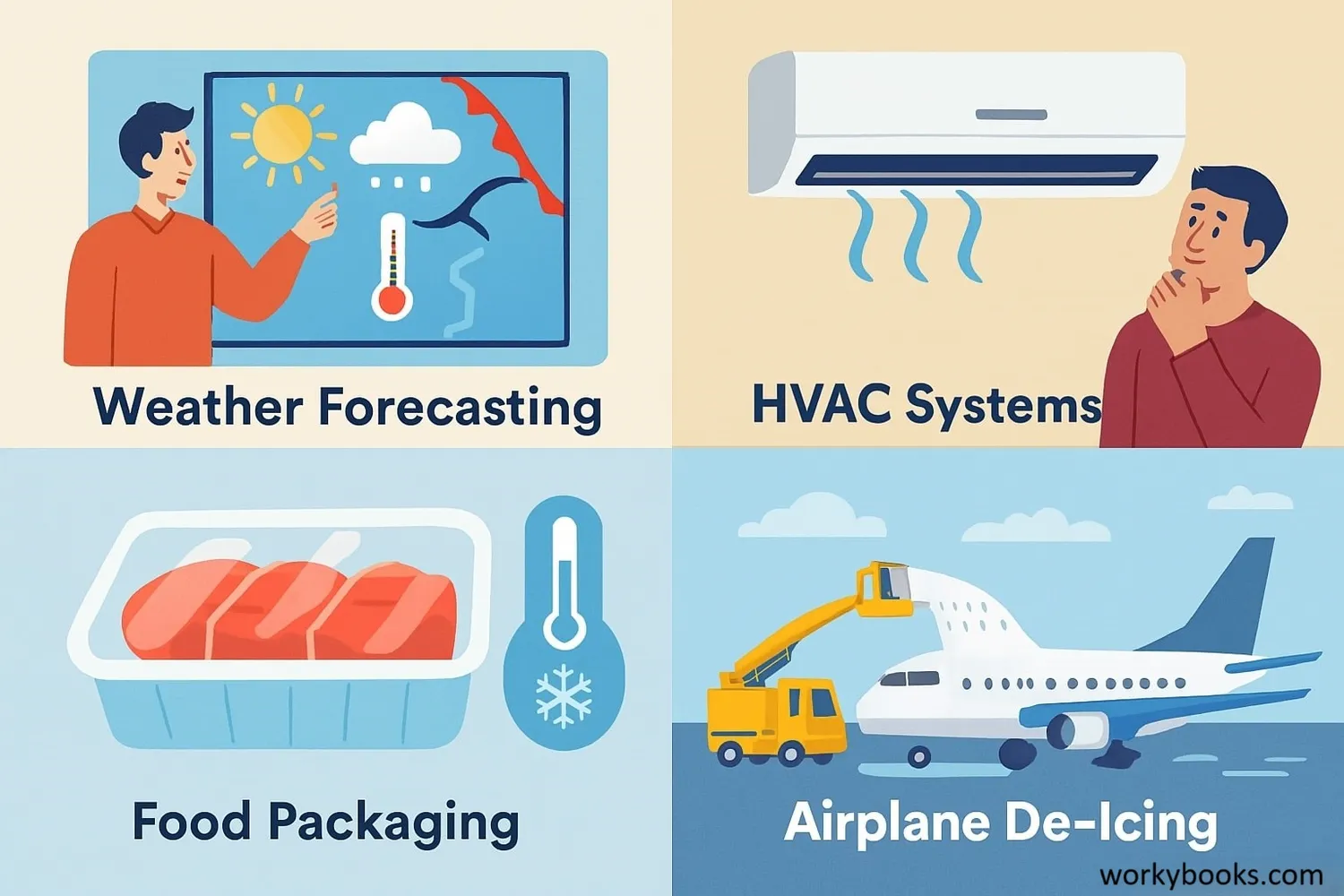Dew Point - Definition, Examples, Quiz, FAQ, Trivia
Discover how temperature and moisture create dew, fog, and frost
What is Dew Point?

Dew point is the temperature at which air becomes so full of water vapor that it can't hold any more, causing some vapor to turn into liquid water. This is what creates dew on grass in the morning!
Imagine the air is like a sponge. Warm air can hold more water (like a big sponge), while cold air holds less water (like a small sponge). The dew point is the temperature when the air sponge is completely full and can't hold any more water.
When the air temperature cools down to the dew point temperature, we see:
• Dew on grass and leaves
• Fog forming near the ground
• Frost when temperatures are below freezing
Weather Fact!
On a clear night, the ground cools faster than the air above it. When the ground temperature reaches the dew point, dew forms!
How Dew Point Works

Dew point is closely related to two important weather measurements: temperature and relative humidity. Here's how they work together:
Water Vapor
Air always contains some invisible water vapor
Cooling Air
As air cools, it can hold less moisture
Saturation Point
When air cools to its dew point, it becomes saturated
Condensation
Excess water vapor turns into liquid (dew) or ice (frost)
The relationship between temperature and dew point tells us about humidity:
• When air temperature and dew point are close: High humidity
• When they're far apart: Low humidity
• When they're equal: 100% relative humidity (saturation)
Human Comfort
When dew point is above 65°F (18°C), the air feels muggy because sweat doesn't evaporate easily from your skin.
Why Dew Point Matters

Dew point isn't just about morning dew - it's important in many areas of our lives:
Weather Forecasting
Helps predict fog, frost, and precipitation
HVAC Systems
Controls moisture in buildings to prevent mold
Aviation Safety
Helps prevent dangerous ice on airplane wings
Dew point is also critical in many industries:
• Food Industry: Prevents moisture damage in packaged foods
• Pharmaceuticals: Ensures proper conditions for medicine production
• Manufacturing: Controls moisture in paint and coating applications
• Agriculture: Helps farmers predict frost damage to crops
Dew Point Quiz
Test your dew point knowledge with this quiz! Answer all 5 questions to see how much you've learned.
Frequently Asked Questions
Here are answers to common questions about dew point:
Weather Trivia
Discover some amazing facts about dew point and weather!
Extreme Dew Points
The highest dew point ever recorded was 95°F (35°C) in Saudi Arabia. At this level, people feel extremely uncomfortable because sweat can't evaporate to cool the body.
Desert Dew Collectors
In some desert areas, people collect dew for drinking water using special nets that catch moisture from fog. When dew point is reached, water condenses on the nets and drips into collection containers.
Spacecraft Monitoring
NASA carefully monitors dew point inside spacecraft. Too much moisture could damage electronics or cause mold, while too little could dry out astronauts' skin and respiratory systems.
Animal Adaptations
The Namib Desert beetle collects drinking water from fog by standing with its back to the wind. Its bumpy shell collects dew that trickles down to its mouth - an amazing adaptation to desert conditions!





